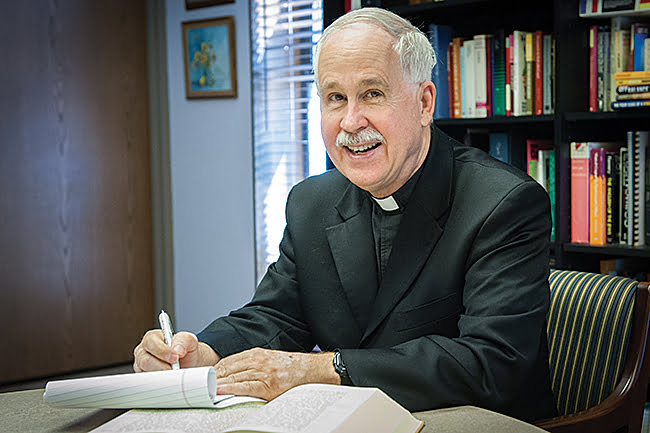
Father Mike Stubbs is the pastor of Holy Cross Parish in Overland Park and has a degree in Scripture from Harvard University.
by Father Mike Stubbs
Kansas is the wheat state. The first crop of wheat in our state was grown at the Shawnee Methodist Mission in Johnson County in 1839.
Drive out to western Kansas, and you will see field after field of wheat growing. Kansas ranked as the leading wheat production state in our country in 2016, with about 467.4 million bushels.
One bushel of wheat contains about one million kernels of wheat. That’s a lot of wheat.
And that makes Sunday’s Gospel reading, Jn 12:20-33, especially appropriate for us. It tells us: “Unless a grain of wheat falls to the ground and dies, it remains just a grain of wheat; but if it dies, it produces much fruit.”
Unlike the synoptic Gospels of Matthew, Mark and Luke, where Jesus frequently tells parables to the crowds, Jesus in the Gospel of John instead offers striking metaphors to make his point. Sunday’s Gospel gives us a good example.
The metaphor of the wheat, which is planted in the earth only to produce a crop, points to the paradox of death leading to new life. Specifically, that mystery will soon be realized in Jesus’ crucifixion and resurrection. But it is a mystery that Jesus expects all his followers will share in.
That is why Jesus immediately adds the words: “Whoever loves his life loses it, and whoever hates his life in this world will preserve it for eternal life.”
This saying of Jesus parallels what we hear in the synoptic Gospels, where Jesus says: “For whoever wishes to save his life will lose it, but whoever loses his life for my sake and that of the gospel will save it” (Mk 8:35).
Jesus expects all of his followers to join him in the mystery of his death and resurrection. That is why he continues with the words: “Whoever serves me must follow me, and where I am, there also will my servant be.”
All this takes place in Jerusalem. Jesus has arrived there to celebrate the feast of Passover. He is also there for his death and resurrection. It will be the supreme moment of his life.
That is why he announces at the beginning of the Gospel reading: “The hour has come for the Son of Man to be glorified.”
It is the time for Jesus’ crucifixion. It is also the time for us to reflect more deeply upon it, and to recognize its meaning for us.

